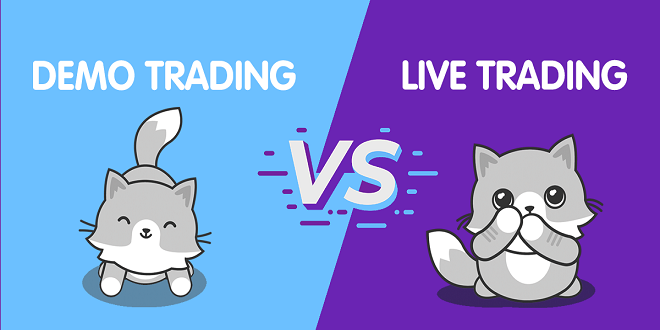Demo vs. Live Trading: Bridging the Gap to Successful Investing

Are you an investor looking to take your trading success to the next level? It’s no secret that there are vital differences between demo and live trading, and understanding these can be the difference between being a rookie trader or an expert.
In this article, we will explore the various facets of demo vs. live trading, helping bridge the gap between novice and accomplished investors so you can potentially maximise your short-term victories in stock investing. We’ll discuss risk management strategies, money-conscious tips for managing losses when entering new positions, and more. Read on to uncover how you can move from demonstration to actual market trades with improved confidence.
What is Demo Trading and What Are Its Advantages
If you’ve ever been curious about trading in the stock market but wanted to avoid risking your hard-earned money, demo trading might be the perfect solution. Demo trading is a simulation of live trading that allows you to practise buying and selling stocks without any actual financial consequences. The advantages of demo trading are clear – you can better understand how the stock market works and practise your trading strategies without any risk.
You can experiment with different investment options and understand how other market conditions can affect your investments. Whether you’re a beginner or an experienced trader looking to test out new strategies, demo trading is a valuable tool that can help you sharpen your skills and build confidence before you jump into the real world of stock trading. With a demo account, you can take all the time you need to learn and perfect your trading style without feeling pressured by the financial stakes.
The Benefits of Live Trading
While demo trading is an essential step in the learning process, there comes a time when transitioning to live trading is necessary. When it comes to stock trading, nothing beats real market experience. Live trading allows you to face the challenges and rewards of investing with real money on the line. It’s an entirely different playing field compared to demo trading, as emotions come into play when your hard-earned money is at stake. It can give you a more accurate experience of what to expect in the stock market and prepare you for handling risk and making quick decisions.
Furthermore, live trading also allows you to take advantage of market opportunities that may not be available in demo trading. For instance, specific investment options, such as initial public offerings (IPOs), are only available to live traders. These opportunities can result in higher returns on your investment and give you a taste of the potential rewards of stock trading.
Strategies for Bridging the Gap between Demo and Live Trading
Now that we’ve covered the main differences between demo and live trading, let’s explore some strategies for bridging the gap. The key is to approach live trading with a similar mindset and design as you did with demo trading but with a few adjustments to account for the increased risk.
Firstly, it’s essential to have a solid risk management plan in place when transitioning to live trading. It involves setting stop-loss orders and sticking to them, as well as diversifying your portfolio to minimise the impact of potential losses. Additionally, it’s crucial to clearly understand your risk tolerance and not let emotions cloud your judgement.
Another strategy is to start small with live trades and gradually increase your position size as you gain more experience and confidence. It will allow you to test the waters and minimise potential losses while giving you a taste of market trading. Lastly, it’s essential to continually educate yourself on market trends, news, and strategies. The stock market constantly evolves, and staying informed will help you make more informed decisions when live trading.
Tips for Success with Both Types of Trading
Whether you’re demo trading or live trading, a few essential tips can help you succeed in both types of trading. Firstly, always have a clear and defined investment plan in place. It includes setting specific goals, determining risk tolerance, and having a strategy for entry and exit points.
Staying disciplined and following your plan is essential, even in market fluctuations. Emotions can often cloud judgement and lead to impulsive decisions, negatively affecting demo and live trading. Additionally, continually reviewing and adjusting your trading strategy as needed is essential. Lastly, always continue learning. The stock market is constantly evolving, and staying informed on new strategies, market trends, and news can give you an edge in demo and live trading.




